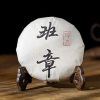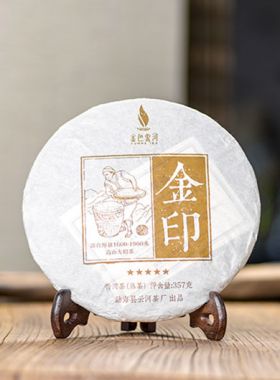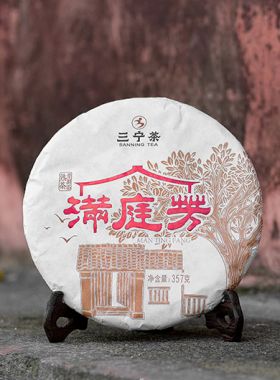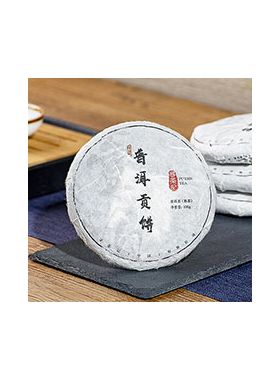-
Fast ShippingFree shipping for orders above $40
to most countries. -
Secure PaymentPay with Paypal, Credit Card …
-
Carefully SelectedFrequently Visit Tea Gardens.
Taste Repetitiously -
15 Days RefundNo Questions Asked
Refund Policy
Lao Ban Zhang Ripened Pu-erh Cake Tea 2008
Full-bodied, smooth and sweet, good for collection
Full-bodied, smooth and sweet, good for collection
| Origin: |
Banzhang Village, Menghai County, Xishuangbanna, Yunnan Province, China |
|---|---|
|
Harvest Date: |
April 6, 2008 |
|
Production Date: |
June 10, 2010 |
| Weight: |
200g |
| Dry Leaf: |
Round and even cake, the strips are fat, reddish brown in color with golden tips on the surface and inside of the cake |
| Aroma: |
Chen Xiang, nutty aroma |
| Liquor: |
Bright and clear deep red |
| Taste: |
Rich, thick, smooth and delicate, the aftertaste is warm and sweet |
| Tea Bush: |
Fengqing Large-leaf Tea Trees (400-500 years) |
| Tea Garden: |
Banzhang Tea Mountain (about 1700m) |
| Caffeine: |
Moderate caffeine (less than 20% of a cup of coffee) |
| Storage: |
Store in cool, dry place away from sunlight; keep ventilated |
| Shelf Life: |
The aged the better |
Angel's Comment:
The color of the tea liquid is as red and bright as wine, the taste is smooth, thick and mellow, it is worth collecting and appreciating.
There is a saying in the Yunnan puerh tea circle that "Banzhang is the tea king and Yiwu is the tea queen," which demonstrates the significance of Lao Banzhang tea in people's hearts. There are largely raw Banzhang teas on the market, but this ripened Banchang that TeaVivre found for you is equally excellent. It was harvested in 2008 and processed into cakes in 2010. It has been aged for over ten years. Tea aficionados who enjoy aged tea should try it.
Its flavor is quite rich and thick from the first steep; the scent is clean and pure, with noticeable Chen Xiang and a mild nutty aroma. The tea liquid is deep red and thick, mellow, smooth, and delicate, yet it contains powerful Cha Qi and has a profound throat rhyming; the aftertaste is warm, sweet, and refreshing; it can also be steeped numerous times.
 |
Cup Method |
 |
Chinese Gongfu Method |
 |
Teacup: 12oz / 355ml |  |
Gaiwan: 3.8oz / 110ml |
 |
212℉ / 100℃ |  |
212℉ / 100℃ |
 |
5g Tea |  |
10g Tea |
 |
Brewing time: 5 - 8 mins |  |
15 steeps: rinse 2 times, 15s, 15s, 20s, 25s, 30s, 35s, 40s, 50s, 60s, 70s, 80s, 100s, 120s, 150s, 180s |
| Rinse time is 5 seconds |
Banzhang Tea Mountain is located in Banzhang Village, Menghai County, and has an elevation of 1700 to 1900 meters, an average annual temperature of 18.7°C, 2,088 hours of sunlight per year, and an annual rainfall of 1341 to 1540 mm. The diversity and culture of the original ecological flora are well preserved here, the soil is rich in organic matter, the sunlight is adequate, the clouds are dense, and the humidity is high, making it ideal for the growth of ancient tea trees. The residents of Lao Banzhang have used traditional ancient techniques to artificially preserve antique tea plants and select new leaves by hand since ancient times, as well as the sun drying process. Currently, Laobanzhang Puerh Tea is one of the few areas in Yunnan Province where inorganic compounds like as chemical fertilizers and pesticides are not used. It is a completely natural, pollution-free, and unique ecological tea manufacturing area.
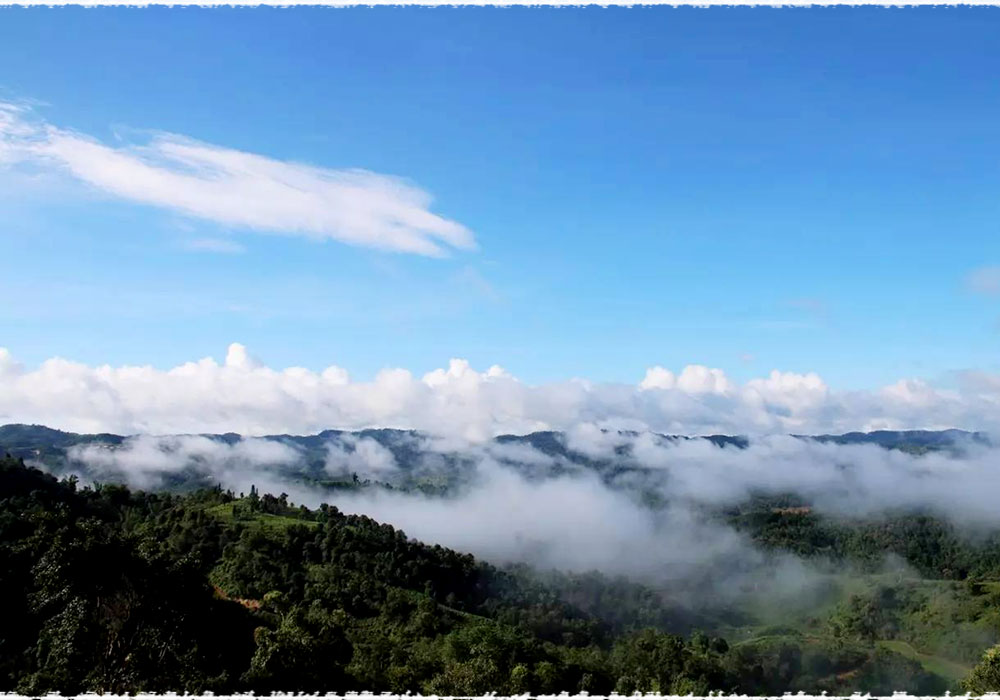


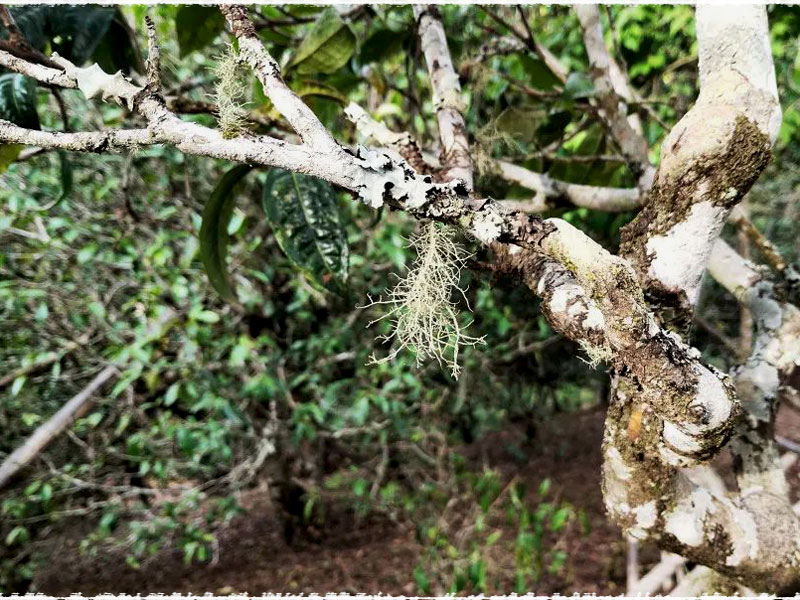

Banzhang tea is grown in Bulang Township, Menghai, Xishuangbanna, Yunnan. "Banzhang" refers to the five natural communities managed by the Banzhang Village Committee, which are located at an elevation of 1,700 to 1,900 meters. The soil is rich in organic matter, has plenty of sunshine, dense clouds and fog, and high humidity, making it ideal for growing tea trees. There are almost 4,400 mu of ancient tea gardens here, all of which are standard large-leaf tea species.
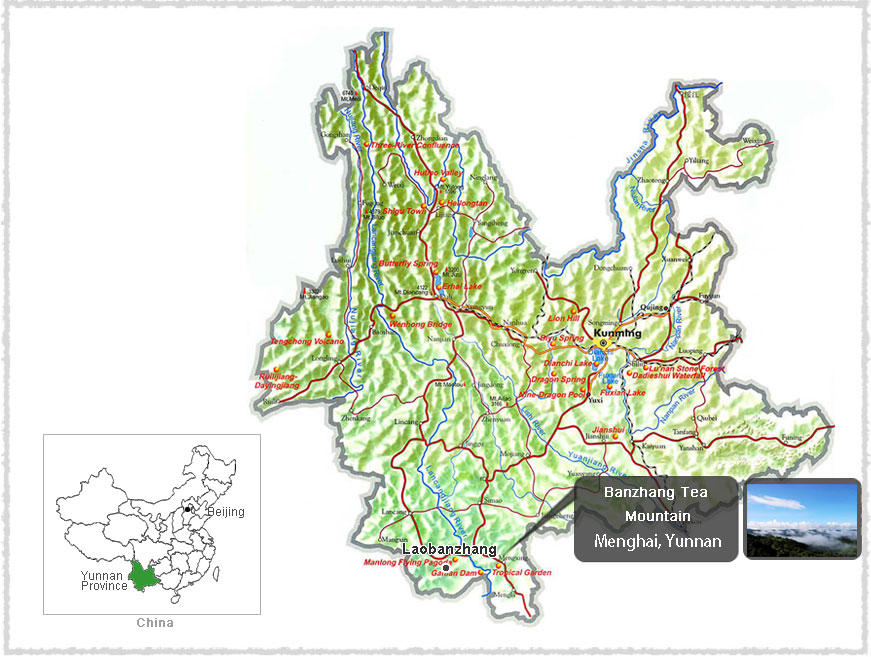
Fengqing large-leaf varietal belongs to the Yunnan large-leaf species. This particular plant can grow to over six meters tall. In 1984 it was certified by the Chinese government as national-grade, and contains an abundant amount of tea polyphenol and catechin: 30.2% and 13.4%, respectively.

Pu-erh tea is one of the oldest types of tea in China, with a history stretching back over 1,700 years to the Eastern Han Dynasty, when the tea was called Jing Cha. Pu-erh is named after the town of Pu’er in Yunnan province, which was the original trading center of this tea. In its early history, this tea was actually used as bartering currency in southwest China, where the famed Cha Ma Gu Dao, “Tea Horse Road”, was built for the sole purpose of transporting it through the Himalayas to other countries and areas in Tibet.




